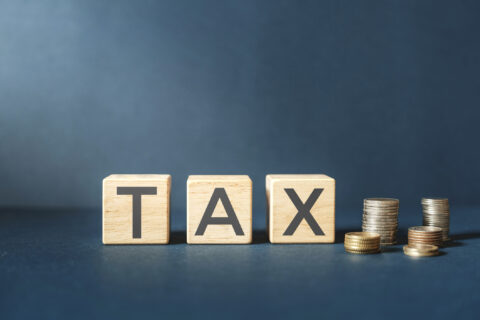Beginning on May 12, low-income households will be able to start applying for the Emergency Broadband Benefit program to get online. The Emergency Broadband Benefit, a temporary program established by the Consolidated Appropriations Act in December 2020, provides $3.2 billion to the Federal Communications Commission (FCC) to provide a $50 monthly discount on in-home broadband service for eligible households, as well as a one-time $100 discount on a laptop, desktop, or tablet computer for those same qualifying households. The FCC adopted rules for this program on February 25, 2021, and the National League of Cities and many local advocates provided comments during the agency’s consideration of these rules urging the FCC to directly incorporate local governments into the program, as they have played a critical role throughout the pandemic in getting residents online.
Most local governments, including most of those operating subsidized service or bulk purchase broadband service programs, are not directly eligible for funding through the Emergency Broadband Benefit. However, local officials have the opportunity to ensure their residents receive all of the benefits to which they are entitled and are able to access this important tool for closing the digital divide. Here are six tips to maximize the value of the Emergency Broadband Benefit for your community:
1. Know Who Qualifies for the EBB
A household is eligible if a member of the household meets one of the criteria below:

- Has an income that is at or below 135% of the Federal Poverty Guidelines or participates in certain assistance programs, such as SNAP, Medicaid, or Lifeline;
- Approved to receive benefits under the free and reduced-price school lunch program or the school breakfast program, including through the USDA Community Eligibility Provision in the 2019-2020 or 2020-2021 school year;
- Received a Federal Pell Grant during the current award year;
- Experienced a substantial loss of income due to job loss or furlough since February 29, 2020 and the household had a total income in 2020 at or below $99,000 for single filers and $198,000 for joint filers; or
- Meets the eligibility criteria for a participating provider’s existing low-income or COVID-19 program.
Think about effective ways to connect with these residents and households. Use your relationships with school systems, universities, libraries, community centers, local businesses, food distribution events, housing providers, job search groups, and local nonprofits to connect with people who may be eligible. These eligible residents will not only need information about the program and their available options, but also may need assistance in collecting eligibility verification documentation and in completing the application and enrollment process. As a local leader, your support in this process can be the difference in eligible residents participating or not. Beginning May 12, eligible residents can start to sign up with local broadband providers or through a centralized website.
2. Know Which Providers in Your Area Participate, and What They Offer
The FCC has released a high-level state-by-state list of participating providers and what service type they offer, as well as whether they offer a connected device. However, this does not mean that the providers offer Emergency Broadband Benefit options throughout the entire state. Compare the list to those providers you know are active in your community. Connect with those providers to get the full details on what participating services and devices they plan to offer to customers. Get insight about their sign-up processes, so that you are well-positioned to help residents get access.
If you have area internet service providers that have not yet elected to participate, contact them to find out if they plan to participate, and encourage them to do so. More information about how providers can enroll is available on the FCC’s website.
3. Use & Customize the FCC’s Free Resources to Spread the Word
The FCC has developed an outreach toolkit for local governments, schools, community organizations, and others to use to share information about the program and how to access it. This toolkit includes graphics, customizable flyers and slides, video, and audio in a variety of languages. These materials can be used as-is or personalized for your community’s official city communications channels, including traditional and social media. For example, your city may wish to adapt the multilingual audio and video files for use on your local government’s cable station or ad buys on area radio stations. Encourage trusted community leaders, including local elected officials, libraries, educators, and religious leaders to share these or your city’s tailored resources through their own communication channels as well.
4. Get Information to People Where They Are
Use the lessons learned over the past year from emergency pandemic response and from your city’s Census get-out-the-count efforts to get information about this program to people where they are likeliest to encounter it and be able to understand it. For residents without existing home broadband access and a computer, this may mean prioritizing traditional television and radio broadcasts as well as sharing information in-person. You may be able to distribute flyers at local markets and events, through utility bills and other mailings, at libraries and community centers, or through clinics, grocery or school meal distribution, and other activities that draw a wide cross-section of your community.
Keep in mind as well that while residents in need of the Emergency Broadband Benefit may not already have a computer with which to access digital information about the benefit, many otherwise-disconnected households rely heavily on smartphones to get online and often are active on social media networks such as Facebook or WhatsApp. Make sure that any information you provide digitally is mobile-friendly and targeted to these mobile-only residents’ internet habits.
5. Use Trusted Messengers
Many residents are likely to be suspicious of a “free internet” advertisement, or an offer that seems too good to be true. Other residents may be concerned about privacy issues, or the difficulty of demonstrating eligibility. Acknowledge these concerns, and make sure that you are providing accurate, clear information about the program, who is paying for it, any costs that will be borne by the household itself, and any other common questions that may come up, ideally in those residents’ preferred language. The FCC has created a consumer FAQ, but you may wish to make additional details specific to your local providers available. Make sure that this information is available to your city’s 311 networks and others who are likely to be asked about the program.
Consider which messengers will be most trusted by the households you want to get online. Local elected officials, with strong relationships in their neighborhoods, are ideally positioned to lead this “ground game.” Schools and religious communities can be great partners in getting the word out and answer questions if you help enlist them as allies. In other communities, these key partners may be recreational or youth sports leagues and facilities, community librarians, or senior groups. Be expansive in your plan for engaging trusted messengers to share this information and encourage participation of eligible residents.
6. Be a Consumer Watchdog
Local elected officials are also in a position to ring alarm bells if the Emergency Broadband Benefit rollout is not going smoothly, if there are solvable barriers to access for households, or if providers are not participating as anticipated. Keep in touch with residents and key stakeholders for regular feedback on participants’ experiences. In particular, be ready to assist residents with the process of enrollment and eligibility verification, both in terms of helping them provide documentation and in doing technical support through the sign-up process. Additionally, be ready to step in as the program winds down and participants are transitioned off the program or to other plans, to ensure that they are not overcharged on enrolled in service they do not want, or disenrolled from service they do wish to continue. Cities are traditionally important watchdogs for their residents’ consumer protection rights, and this program is no different. Concerns about the program should be reported quickly to the Federal Communications Commission and your local consumer affairs department for investigation and remediation.










